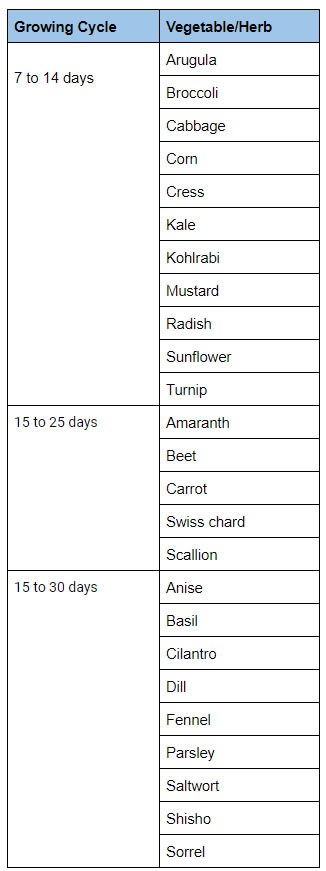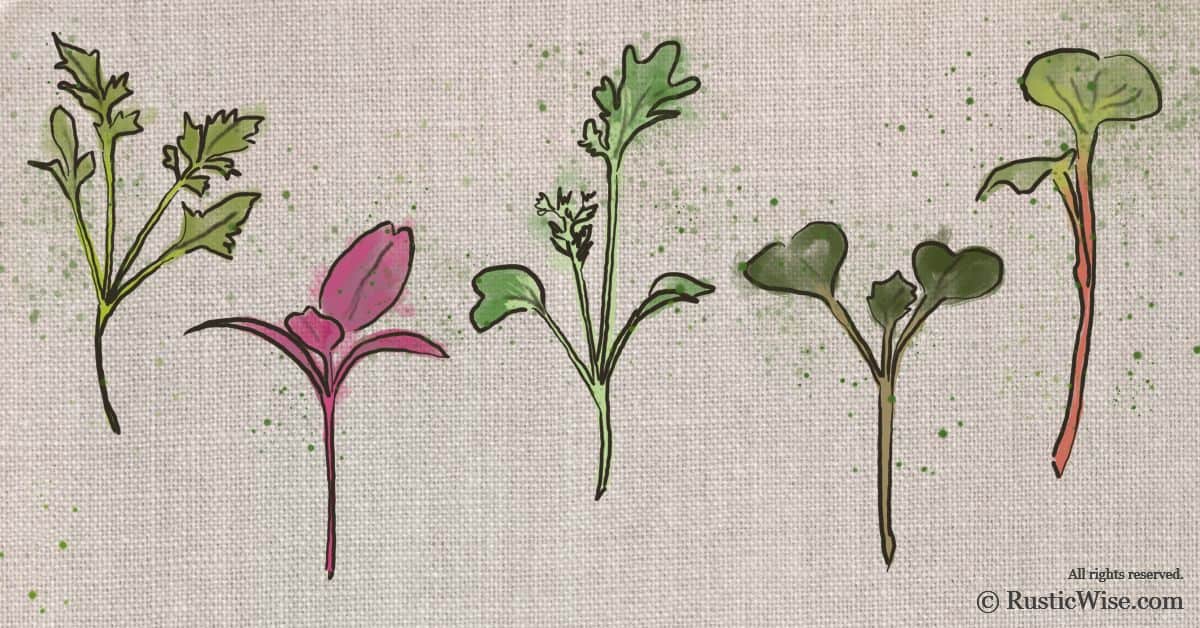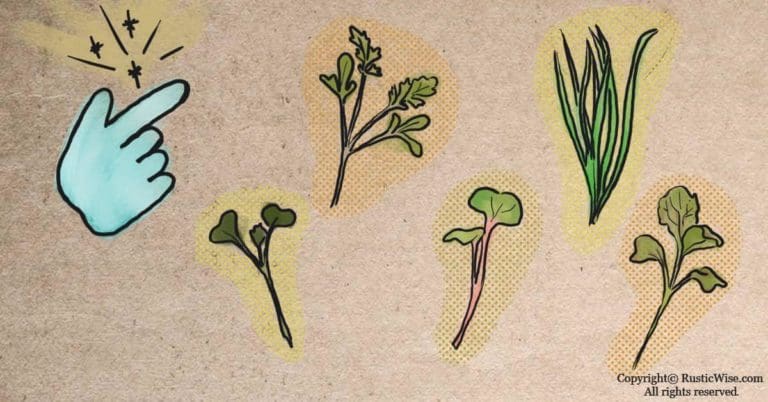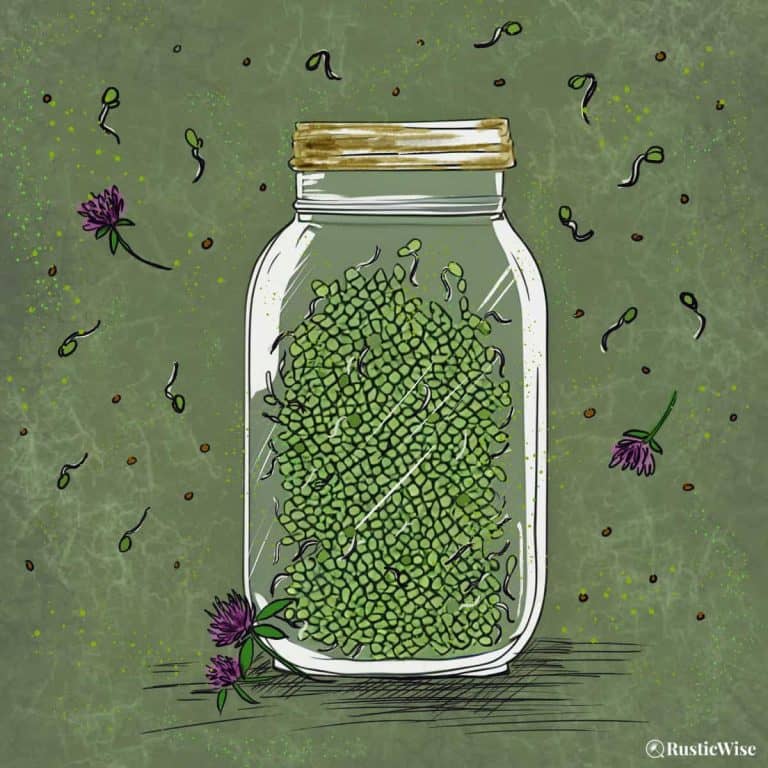A Guide to Finding the Most Profitable Microgreens
Microgreens have become stars of the edible plant world of late. You might have seen them on a menu at a local farm-to-table restaurant, at a specialty grocery store, or at your local farmer’s markets. Or maybe you’ve heard of a friend starting a side business growing microgreens.
I must admit, as someone who loves gardening, I found the idea of growing something healthy and sought-after like microgreens intriguing. So I decided to look into the idea of growing microgreens as a profitable business, which includes determining which ones are the most profitable microgreens. There are many people out there who are already doing it and earning a profit.
These tiny green shoots, no taller than a few inches tall, are harvested from a variety of vegetables, herbs, and even edible flowers when they are just beginning to develop their true leaves. This is when they are at their peak vibrancy and optimal health.
Packed with nutrients, easy to grow, space efficient, and short grow times make it an attractive crop to turn a profit.
You also don’t need a ton of space. Do you have a bit of extra space to turn into your own little microgreens farm? This could be a basement, spare bedroom, garage, or small greenhouse.
Startup costs are also low.
Some are doing it as a side hustle, while others have gone all in and are doing it full time. So let’s look into some practical considerations of turning this into a sustainable business and try to find the most profitable microgreens.
Doing your research
Before you dive head-first into the microgreens world, it’s important to do your research first into your local market.
Consider potential markets you could sell your microgreens to such as:
- Local restaurants, coffee shops
- Catering companies
- Farmer’s markets
- Organic grocers
Check out the local market and competition:
- Do you have a lot of microgreens growers in your area? If so, how can you differentiate yourself?
- Is there a demand for locally-grown, healthy produce?
How do you plan on presenting your finished product? A few examples include:
- As a whole living tray
- Individually packaged by different varieties
- Packaged as a salad mix
- Included as a package with other vegetables
Research local business, and health and safety regulations:
- Do you require a license or permit to operate a small microgreens operation?
- What health, safety, and labelling guidelines are there?
How much money could you make a month?
Well, that really depends on a number of factors including the number of trays you grow, whether you plan on doing this part-time or full-time, and pricing.
The great thing about microgreens production is that it’s scalable. You can make it a side job or hobby, or you can ramp up production, hire employees, and build an empire. It’s entirely up to you.
If you have a small urban microgreen farm and are spending less than 20 hours a week, you can reasonably make at least $400 to $500 per month. Full-scale operations could potentially make six-figures.
Over at GroCycle, they provide a few rough earnings estimates:
- Using a growing rack with four shelves, you produce about 50 pounds (800 ounces) every two weeks in a 60 square foot (5.6 square meters) space. Assuming $20 per pound, you can expect to make roughly $1,000 per grow cycle, or $2,000 per month.
- In other words, once your business is off the ground and running, you have the potential to make between $30–$50 per square foot (or $100–$160 per square meter).
Good seeds
With microgreens, you need seeds. A LOT of seeds. Since the microgreens market is very health-conscious, organic seeds are your best bet. The ability to buy in bulk also helps to cut down on costs.
Buying seeds from a reputable supplier ensures your microgreens are high yielding, uniform, and come from healthy parent plants.
Finding the most profitable microgreens
So how do you find the most profitable microgreens? There are several factors to consider including the length of grow cycle, difficulty growing, and market demand. The highest profit microgreens will strike a balance of all three factors and will differ from location to location.
Fast-growing microgreens
In the world of business, the saying, “time is money” is certainly true as it applies to growing trays of microgreens. The faster your growing cycles, the more money you could potentially make (assuming you can maintain high yield and crop quality of course).
If you can go through two growing cycles versus just one, this helps your bottom line.
Selecting microgreens with shorter grow cycles is one factor to consider in finding high profit microgreens. It helps to know a few fast-growing microgreens:

Easy microgreens
Of course a fast-growing microgreen is beneficial, but it’s not the only factor to consider. Some types of microgreens are just easier to grow. They don’t need any type of special treatment and grow with minimal effort.
And on the other hand, there are more challenging varieties. These types of microgreens might take longer to grow, and sometimes encounter problems like mold, or uneven growth.
There’s nothing more frustrating than sowing seeds, tending to your greens, then having a gardening failure.
Here are a few easy microgreens that are good for beginners:
- Arugula: With a sharp, peppery flavor, it spices up salads.
- Broccoli: Mild and versatile taste that goes well with many dishes.
- Cabbage: There are many cabbage varieties. Napa cabbages (aka Chinese cabbage) are slightly sweeter and more tender than green cabbage.
- Cress: Rich in vitamin C and K, curly cress tastes like black pepper and is great at spicing up dishes.
- Mustard: Slightly spicy and tender, mustard microgreens taste a bit like horseradish. Use them as you would horseradish and pair with roast beef, or even with sushi.
- Radish: Some radish varieties have a lovely red stem when they are microgreens—adds a splash of color!
Easy mixes to try growing
Like ready-to-eat salad in a tray, some seeds come as a mix and are great for beginners:
- Radish mix
- Mild mix of sweet and mild brassicas
- Spicier mix for stronger-tasting types
More challenging microgreens to grow:
- Amaranth
- Basil
- Beet
- Carrots
- Cilantro
- Dill
- Scallions
- Swiss chard
- Purslane
While many people love sunflower microgreens for their nutty and fresh flavor, they can sometimes be a bit challenging to grow. Sometimes you get a bad batch of seeds, or the seeds don’t germinate properly.
Does this mean you should avoid growing more challenging varieties altogether? Not necessarily. Maybe you can introduce a few more challenging microgreens into your operation once you’ve mastered a few easy ones. And if there’s a unique market demand for oh say, amaranth or purslane, then go for it!
Local market tastes and demand
Doing market research is vital, especially if there are quite a few other competitors in your area.
- Demographics: Look into your local city and find out what types of cuisines are popular. For example, if Italian cooking is big, you might consider growing basil. If Asian food is popular, try growing bok choy microgreens.
- Differentiate yourself: Just because all your competitors are growing broccoli microgreens doesn’t mean you can’t. But how can you differentiate yourself from your competitors? Perhaps you grow a different variety of broccoli, or offer it as a salad mix or a living tray.
Conclusion
So finding the most profitable microgreens really depends on your local market demands, as well as the growing times and ease of growing. For example, if there’s a huge demand for amaranth in your area, even though it has a longer growing cycle and can be challenging to grow, it might be a profitable microgreen to grow, especially if few others are growing it.
But it’s always good to go with a few easy varieties such as radish, mustard, or cress to get started.

Author: Josh Tesolin
Josh is co-founder of RusticWise. When he’s not tinkering in the garden, or fixing something around the house, you can find him working on a vast array of random side projects.










